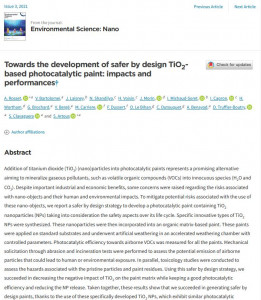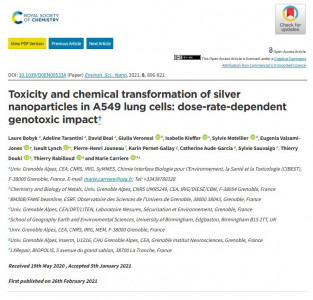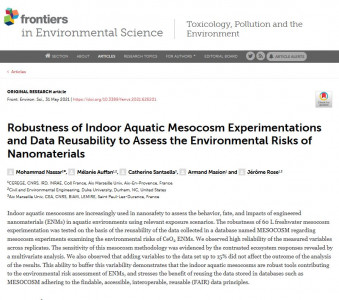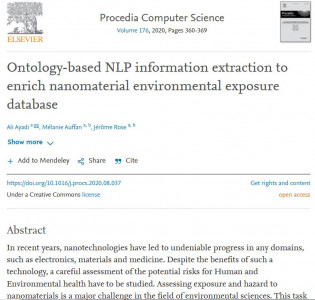Article on "Aqueous aging of a silica coated TiO2 UV filter used in sunscreens: investigations at the molecular scale with dynamic nuclear polarization NMR" by Slomberg, D. L., Catalano, R., Ziarelli, F., Viel, S., Bartolomei, V., Labille, J., & Masion, A. (2020).
Abstract:
Short-term, aqueous aging of a commercial nanocomposite TiO2 UV filter with a protective SiO2 shell was examined in abiotic simulated fresh- and seawater. Under these conditions, the SiO2 layer was quantitatively removed (∼88–98%) within 96 hours, as determined using inductively coupled plasma-atomic emission spectroscopy (ICP-AES). While these bulk ICP-AES analyses suggested almost identical SiO2 shell degradation after aging in fresh- and seawater, surface sensitive 29Si dynamic nuclear polarization (DNP) solid-state nuclear magnetic resonance (SSNMR), with signal enhancements of 5–10× compared to standard SSNMR, was able to distinguish differences in the aged nanocomposites at the molecular level. DNP-SSNMR revealed that the attachment of the silica layer to the underlying TiO2 core rested on substantial Si–O–Ti bond formation, bonds which were preserved after freshwater aging, yet barely present after aging in seawater. The removal of the protective SiO2 layer is due to ionic strength accelerated dissolution, which could present significant consequences to aqueous environments when the photoactive TiO2 core becomes exposed. This work demonstrates the importance of characterizing aged nanocomposites not only on the bulk scale, but also on the molecular level by employing surface sensitive techniques, such as DNP-NMR. Molecular level details on surface transformation and elemental speciation will be crucial for improving the environmental safety of nanocomposites.
DOI: 10.1039/D0RA00595A









